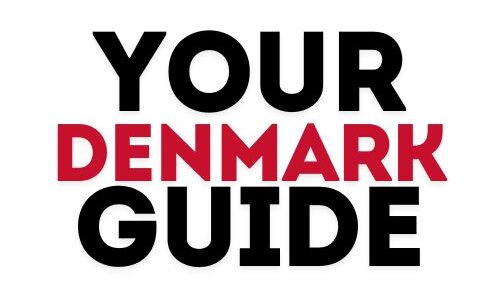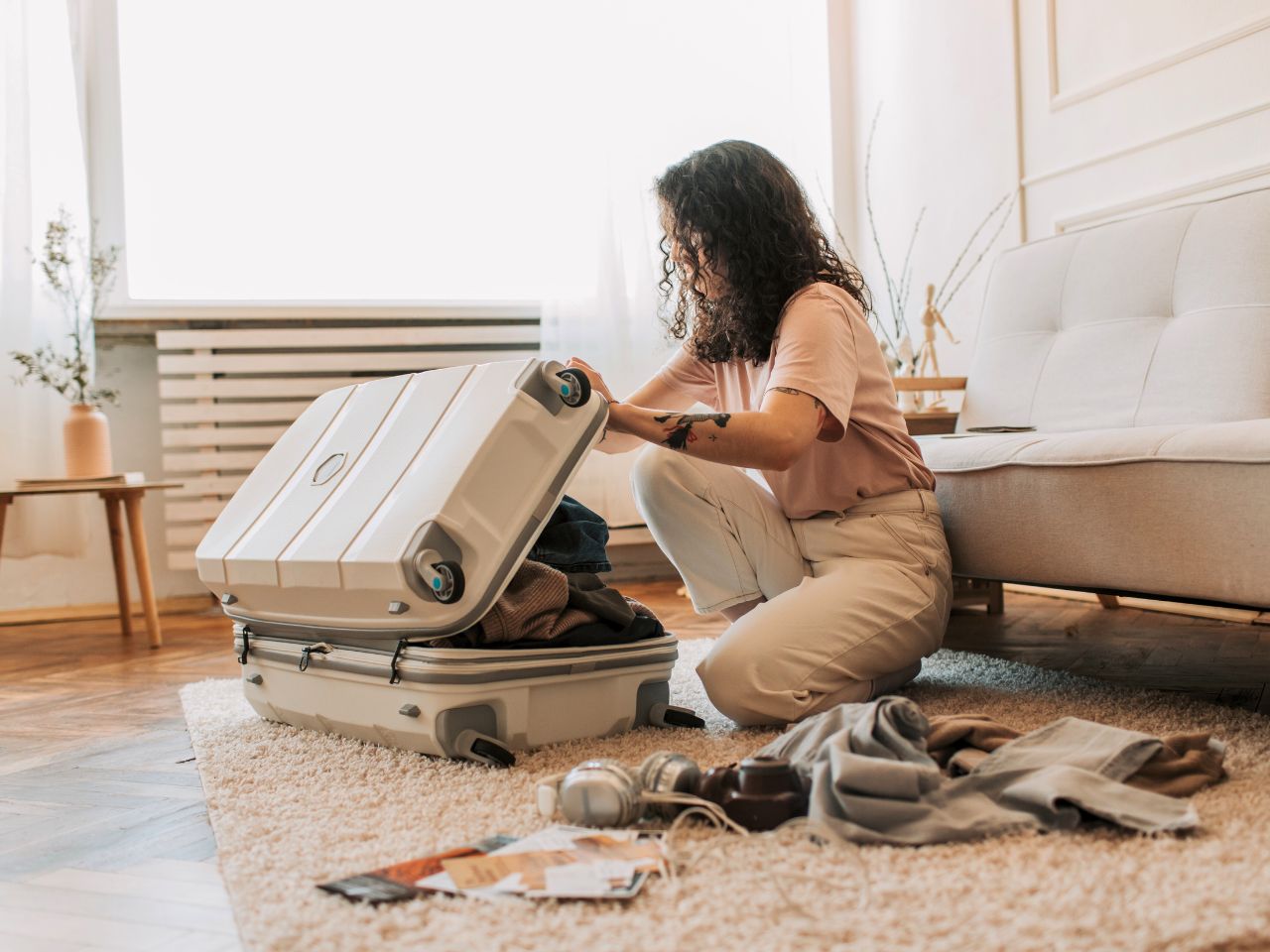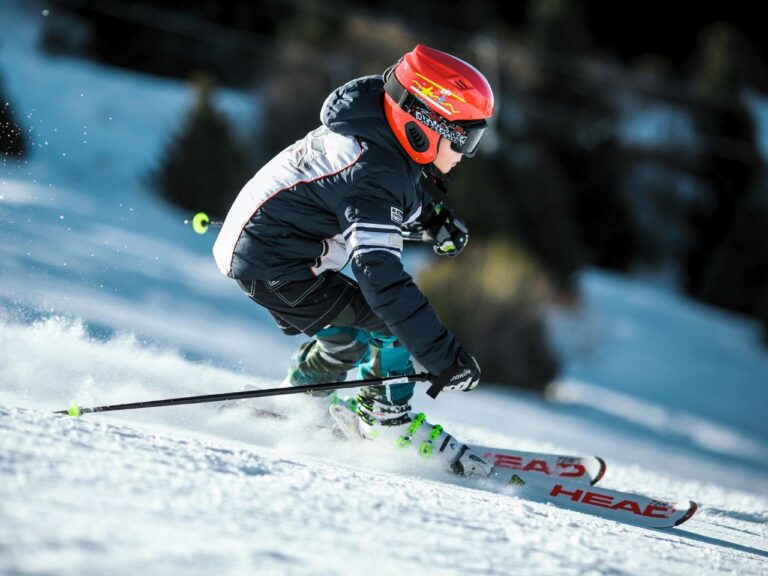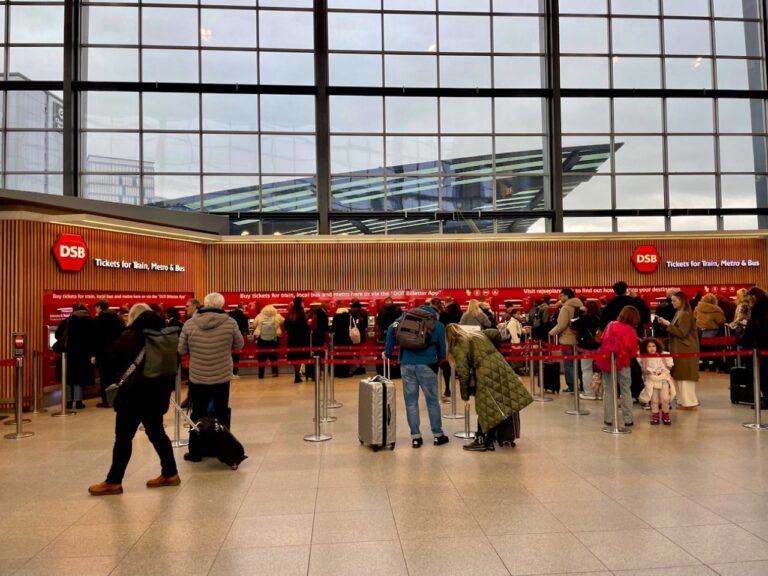Packing List For Denmark: The Only Guide You Need

Planning a trip to Denmark and wondering what to pack?
With its unpredictable weather, having a well-thought-out packing list can make all the difference and is the key to a stress-free trip.
As someone who has lived for many years and traveled extensively in Denmark, I know exactly what you’ll need to stay comfortable, prepared, and ready to explore.
And if you’re traveling with children, don’t worry—I’ve included the packing list and tips for them too.
This comprehensive packing list for Denmark is thoughtfully categorized and grouped for ease of reference. Each item is explained so you know exactly why it’s important.
Let’s dive in and make your packing as smooth as your trip will be!
In This Post:
Bags and Luggage
- A suitcase and a backpack: To pack all your belongings. Getting around Denmark is easy because of its efficient and organized public transport system.
- A small reusable daypack: Denmark charges extra for shopping bags. So having your own daypack is practical and eco-friendly. It is also best for carrying essentials while exploring the city and can hold Danish souvenirs or extra items you pick along the way.
- Packing cubes: A game changer in keeping clothes organized and easily accessible. They save space and make it simple to pack and unpack whenever needed.
- Luggage locks or padlocks: Keep your belongings secure during travel.
- A waterproof pouch is a practical way to keep your passport, phone, and other important documents safe from water or unexpected spills. Denmark often has unexpected rain showers, so don’t forget a waterproof pouch.
- A laundry bag: To separate dirty clothes or used shoes from the rest of your items. It makes unpacking and laundry easier when you get home.
- Wallet or purse: To keep your cash and cards secure and easily accessible.
- A toiletry bag: Helps keep all your toiletries organized and easy to find. A roll-up style with a hook is convenient since you can hang it on the back of a door or a towel rack.
- Cross-body bag: Common in European countries, especially among women. For quick access to mobile phones and wallets.
Travel Insurance for Denmark
Healthcare is expensive in Denmark for visitors. Travel insurance is essential as any unexpected accident could burn a hole in your pocket.
A good travel insurance policy covers emergencies like medical care, lost luggage, trip cancellations, etc. It provides peace of mind and financial protection, ensuring you’re prepared for unforeseen travel situations.
EU/EEA nationals with public health insurance scheme are entitled to free health coverage in Denmark. You can get it by submitting the European Health Insurance card.
Documents Needed + Money
- Passport: Ensure your passport is valid for at least six months and has at least one blank page for stamps. This is required for international travel to Denmark and helps avoid any problems at customs or immigration.
- Visa: Denmark is one of 27 EU Schengen member countries, and traveling to Denmark requires a Schengen visa for nationals from non-exempt countries. EU/EEA nationals can travel to Denmark without a visa. Visa rules can be checked on the official Danish government website.
- Passport-size pictures: Carry a few passport-sized images as they can be useful for filling out forms for permits, visas, or other documentation during your trip.
- Driving license: If you have a valid driving license from an EU/EEA country, you can drive in Denmark. Non-EU/EEA citizens may need an International Driving Permit (IDP). Refer to the Danish Road Traffic Authority’s website for the most accurate and detailed information.
- Flight tickets: Physical copies or digital versions saved on your mobile phone. Having a printed copy as a backup can be helpful if your phone runs out of battery or if there are any technical issues. Always double-check your airline’s requirements before traveling.
- If you plan to visit multiple attractions in Copenhagen, consider getting the Copenhagen Card. It can save you time and money, depending on your plans. Read the article to find out if it’s worth buying a Copenhagen Card.
- Click pictures of important documents like your passport, visa, and other travel-related documents. Email these to yourself so you can access them in case of loss or theft. Also, take pictures of your credit cards.
- Credit and debit cards: VISA and MasterCard are widely accepted in Denmark. American Express is also accepted but may not be as commonly used as VISA and MasterCard. Before you travel, notify your bank that you’ll be using your card in Denmark to avoid any transaction issues.
- Cash: Danish Kroner (DKK) is Denmark’s currency. While cards and online payments like MobilePay are accepted everywhere, it’s a good idea to carry some cash for small purchases or if the internet fails to connect. Euro is not used in Denmark.
- Keep a detailed itinerary and a map handy to stay organized and make the most of your time. An itinerary helps you plan your day efficiently, allowing flexibility while ensuring you don’t miss important experiences. Physical or downloaded offline maps on your phone can be lifesavers if you lose internet access. Keep both easily accessible during your trip.
- Guidebooks: A handy resource for exploring Denmark with maps, practical tips, and local insights. It’s a great backup for on-the-go planning!
SIM Cards
Buying a local SIM card in Denmark is more affordable than using your existing roaming services, and it also works in other EU countries.
- eSIM: Purchase online and set it up for immediate activation when you arrive.
- Physical SIM Card: Available at the airport, convenience stores, supermarkets, and gas stations for easy setup and local rates.
Check out my SIM card guide for more details and tips on choosing the best. Additionally, free Wi-Fi services are available at the airport, some public areas, cafes, and hotels to help you stay connected.
Clothing Essentials for Denmark
“There is no such thing as bad weather, only bad clothing” – A well-known saying that I’ve heard so many times and It’s a reminder nature has given me time and again. It suits perfectly in Denmark where the weather can change quickly and wearing the right clothing makes all the difference.

Check out my “What to Wear in Denmark?” page for tips on dressing for the seasons and adapting to the weather. It’s always a good idea to see the forecast before your trip.
Agalya’s Tip: Danes and Scandinavians prefer casual and simple clothing. They usually wear neutral colors like black, grey, white, beige, and brown, rather than bright colors. Wear basic, comfortable outfits with these muted tones if you want to fit in. The clothing style of the Danes is all about keeping it stylish and minimalist for any occasion.
- Casual shirts/ T-shirts: Pack casual shirts or T-shirts as the dress code in Denmark is generally relaxed.
- Casual pants/ Shorts: For comfortable everyday wear. Pants are great for cooler days, while shorts are ideal for warmer weather.
- Waterproof jacket: Denmark’s weather often changes without warning, and it can rain any time of year. A waterproof jacket is essential for staying dry while you’re out exploring. It’s practical to ensure you’re prepared for sudden showers.
- Layered clothing: Bring layers like thermals, fleece, and sweaters to adapt to Denmark’s changing temperatures, especially during winter. Layering keeps you warm and protects you from unpredictable weather. Read my “Snow in Denmark” guide to know all about the weather during the winter season and how to dress.
- Take at least one outfit to wear for a nice dinner. Danish people dress very well. Refer to the How to Dress in Denmark guide for more clothing tips.
- Underwear (Men and Women): Pack enough underwear, so you don’t have to hassle doing the laundry. Thermal underwear is also a good choice for winters.
- Scarves, and gloves (winter season): These are must-haves for staying warm during the winter months in Denmark which is from November to February.
- Quick-drying towel: A quick-drying towel is compact, lightweight, and incredibly useful, especially for trips to saunas, harbor baths, or the beach.
- Swimwear: Pack swimwear if you plan to take a dip in Denmark’s harbor or relax in its private saunas and spa facilities. It’s a great way to unwind during your trip. A swim cap and swimming goggles are optional.
- Comfortable walking shoes: You’ll be exploring a lot on foot, so wear shoes that keep your feet comfortable. Walking or biking is a great way to get around the city.
- Water-resistant boots (winter): Pack warm, sturdy boots for winter trips to Denmark. They’ll keep your feet dry and comfortable in cold and wet conditions. Choose boots with a good grip to navigate snowy streets safely.
- Socks: Pack enough socks to keep your feet dry and blister-free during long days of walking or exploring. Opt for merino wool socks that are breathable and durable.
- Bathing slippers: These are necessary for saunas and harbor baths in Denmark, to walk around the wet areas safely. If you plan to visit any of these places, make sure to pack a pair to avoid any inconvenience.
- Formal outfits (Optional): Pack formal attire if you plan to attend any formal or business meetings, or dine at upscale restaurants. These guarantee you’ll be well-dressed for any occasion.
- Workout clothes and shoes: If you plan to stay active during your trip, pack a pair of workout clothes and shoes. Whether it’s a morning jog, cycling, a visit to the gym, or a yoga class, having the right gear makes it easier to stick to your fitness routine.

Flight Comfort Essentials
- Eye mask and earplugs: Useful for blocking out light and noise to help you rest better.
- Neck pillow: Keeps your head supported for a more comfortable sleep during the flight journeys.
- Blanket or travel scarf: Airlines may not always provide blankets, so bringing your own ensures comfort during the flight.
Personal Care and Accessories
- Hairbrush or comb: To keep your hair tidy.
- Hair accessories: Clips, hair bands, and scrunchies to secure loose hair strands. A few bobby pins or small claw clips can also help with quick styling.
- Deodorant: To stay fresh throughout the day. Roll-ons or solids are great choices to avoid liquid restrictions during flights.
- Small mirror: Compact and lightweight mirrors are ideal for quick touch-ups, applying makeup, or grooming on the go. They are also easy to carry in your bag for convenience.
- Nail clippers: Helpful if you are staying for long.
- Jewelry: Items like a watch, earrings, or a necklace you wear regularly. Pack only the essentials and the items that could match multiple outfits to keep it minimal. Pack a few elegant pieces if you’re attending events or formal dinners.
- Jewelry storage case: Use a small, secure jewelry case to keep your items organized and prevent tangling or damage.
- Makeup basics (Optional): Bring daily essentials like foundation, mascara, eyeliner, and lipstick.
- Makeup remover: To cleanse your face at the end of the day, ensuring your skin stays healthy.
- Curling iron/ Flat iron (optional): If you like to style your hair for formal events or nights out, pack a compact curling iron or flat iron. Opt for a travel-friendly, dual-voltage option to ensure compatibility with Denmark’s 230V standard.
- Blow dryer (optional): Many accommodations provide hairdryers, but if you prefer your own, bring a travel-size blow dryer.
Weather Protection Gears
Denmark is known for sudden rain showers, so being well-prepared is essential for a pleasant trip. Ensure you carry the following items to prepare for Denmark’s unpredictable weather.

- Sunscreen with SPF
- Moisturizer and lip balm – the weather is dry here
- Hat
- Sunglasses
- Rain cover
- Raincoat and pants
- Umbrella (may not be suitable if it is windy)
Food and Drinks
- Reusable water bottle: Tap water in Denmark is safe to drink and of excellent quality. Carrying a reusable bottle allows you to stay hydrated, save money, and reduce plastic waste.
- Dry fruits and snacks: Packing some dry fruits and snacks is a smart choice, especially if traveling with children. They’re handy for long day trips, hikes, or unexpected delays.
Toiletries
It’s best to carry your preferred brands for personal comfort, as they may not always be available in Denmark. Packing essentials like shampoo, soap, deodorant, and other personal care items ensures you have what you need and avoids the hassle of searching for replacements during your trip.
Here’s a list of essential toiletries that you might want to carry.
- Toothpaste
- Toothbrush
- Facial wash
- Soap or body wash
- Shampoo and conditioner
- Razor and shaving kit
- Feminine hygiene products – Menstrual cups, sanitary pads, or tampons
- Tissues and wet wipes: For quick clean-ups, runny noses, or restroom needs when traveling. Wet wipes are useful for cleaning sticky hands or tackling small messes on the go.
- Hand sanitizer and antibacterial wipes: Helps keep hands clean and reduce the risk of germs. If you’re traveling with children, they’re also great for cleanups after food or any fun activities.
Personal Medications
When traveling to Denmark, it’s important to be aware of the country’s strict regulations on importing medicines:
- Quantity limits: If you’re entering Denmark outside the EU/EEA, you can bring medicines for personal use, but only up to a three-month supply. Ensure you have the purchase receipt and a valid prescription with you.
- Prohibited substances: It is illegal to import medicines that contain doping agents or euphoriant substances. Possession of such chemicals can lead to legal consequences.
For detailed information and to ensure compliance, please check the Danish Medicines Agency’s guidelines.
Travel First Aid Kit
I always travel with a first aid kit. It’s essential to have one, especially considering the cost of healthcare in Denmark, which can be expensive.
Pack everything in a compact, waterproof pouch for easy access.
A well-stocked kit ensures you’re prepared to handle minor injuries or illnesses immediately, saving you time and hassle in an emergency.
- Band-aids and sterile gauze: For cuts, scrapes, or blisters.
- Antiseptic wipes/ Cream: To clean the wounds and prevent infections.
- Pain relievers: Paracetamol or Ibuprofen for headaches, muscle pain, or fevers.
- Motion sickness pills: Useful for car, boat, or air travel if you’re prone to nausea.
- Thermometer: To check for fever if you’re feeling unwell.
- Prescription medications: Any prescribed medicines you regularly take, with a copy of your prescription.
- Tweezers and scissors: For removing splinters or cutting gauze.
- Cold/ Flu tablets: For treating minor colds or congestion.
- Anti-diarrhea medicine: In case of stomach upset during your travels.
- Insect repellent: Useful for keeping bugs, ticks, and mosquitoes away, especially if you’re exploring outdoor areas or parks.
- Contact lenses, solution, and kit (or glasses with protection box): If you wear contact lenses, pack your solution and a kit for cleaning and storing them. Bring glasses as a backup, and a sturdy box to protect them while traveling.
- Allergy medication: Essential if you have allergies, as you may encounter new triggers like pollen or food during your trip.
- Vitamin tablets (Optional): Handy for maintaining your vitamin levels while traveling, especially if your diet changes or lacks certain nutrients.
- Vitamin D supplements: A must during winter as you will hardly get enough sunlight.
Travelers visiting Denmark are not required to provide any proof of vaccination.
Electronics for Denmark
- Mobile phone: Of course! Your mobile phone is essential for navigation, communication, and capturing memories. Don’t forget to pack your charger and a charging cable.
- Universal power adapter: Essential for charging your electronic devices in Denmark. The country uses Type C, E, F, and K plugs and sockets, with a standard voltage of 230 V and a frequency of 50 Hz.
- Power bank: A power bank is a lifesaver if you use your phone frequently for photos, navigation, or staying connected. It helps your devices to charge on the go, ensuring you don’t run out of battery while exploring.
- Camera and accessories (optional): Denmark’s scenic landscapes, historic architecture, and lively streets make it incredibly photogenic. While your phone camera might do the job, consider bringing a DSLR with wide-angle and zoom lenses to capture more detail and variety. Don’t forget accessories like extra batteries, memory cards, and a tripod/ gimbal for steady shots.
- Laptop and accessories: If you plan to work remotely, attend meetings, or attend conferences during your trip, a laptop and a charger are essential. A laptop is also handy for tasks that require a larger screen.
- Drone and accessories (Optional): If you’re considering bringing a drone to Denmark, visit the Danish Civil Aviation and Railway Authority’s official site on drone regulations.
- Noise-canceling headphones: These are perfect for flights, train rides, or noisy environments. They’re also great for listening to your favorite podcasts, enjoying music, or following an audio guide while exploring attractions.
Entertainment
- Kindle or physical books: Ideal for downtime during your trip. Kindle is handy for saving space and carrying multiple titles. If you’re traveling with kids, bring along bedtime storybooks. Did you forget to pack one? You can always visit Arnold Busck or other bookstores in Copenhagen that offer a great selection.
- Journal and pen (Optional): A journal is great for jotting down memories, travel details, or daily plans. It’s also handy for sketching, noting down recommendations, or reflecting on your experiences during the trip.
- Board games or playing cards (Optional): These are great for downtime or unexpected delays during journeys. They are easy to pack, fun, and simple entertainment on the go!
Packing List for Denmark with Children
Denmark is an excellent family destination. It’s safe, clean, and easy to navigate with efficient public transport, making it a stress-free experience for both kids and parents.
If traveling with children, go through the following packing list and pack all the necessary items for a safe and comfortable trip.
- Baby carrier or stroller: Both baby carriers and strollers are allowed on buses and trains in Denmark, making it easy to travel with your little one. Choose a lightweight and foldable option for convenience.
- Children’s clothing: Pack layers of comfortable clothing for your child to adapt to Denmark’s varying weather. For additional information, refer to the clothing essentials.
- Baby bibs: Take a few bibs to keep mealtimes mess-free, especially when traveling.
- Children’s food and drinks: Don’t forget your child’s favorite treat or comfort food ensuring their dietary needs are met, especially if your child has food allergies. Ready-to-eat or instant meals are convenient for travel and can be lifesavers in unfamiliar places.
- Children’s medicines: Pack any specific medications they may need.
- Baby toiletries: Baby shampoo, soap, and tooth-care products to ensure your baby stays clean. Travel-sized bottles are convenient and easy to carry. These are especially important if your baby has sensitive skin, as familiar products can help avoid irritation from unfamiliar brands.
- Diapers: At least for the first 3-4 days, so you don’t go hunting as soon as you arrive. Don’t forget diaper bags or disposable liners for easy cleanup.
- Games/ toys/ stuffed animals: Your child’s favorite games, small toys, or a comforting stuffed animal can help keep them entertained.
- Coloring books, crayons, and pencils (Optional): To keep your children engaged during flights, train rides, or waiting at restaurants. They encourage creativity and are easy to pack.
- Nursing cover: A nursing cover provides privacy and comfort for breastfeeding in public spaces.
- Breast pump: Helps to store milk or relieve discomfort during travel. These items are essential for nursing mothers to stay prepared and comfortable.
- Bottles and sippers: Essential for feeding and keeping your baby hydrated.
- Lunch boxes: Great for carrying baby food, snacks, or small meals while traveling. They are compact and easy to clean, keeping children’s favorite food handy.
- Pacifiers or teethers (if applicable): These can help soothe your baby during flights or while waiting.
- A few ziplock bags: To carry the leftovers. Children don’t always finish their meals.
More Travel Tips for Smart Packing
- Carry-on essentials: Pack a t-shirt, shorts, underwear, and a travel-sized toiletry kit in your carry-on. These are invaluable for flight delays, lost baggage, or refreshing up after a long journey.
- Leave space for souvenirs: Reserve some room in your luggage for souvenirs or unexpected purchases during your trip.
- Limit “Just in Case” items: Avoid overpacking and be realistic about what you’ll actually use.
- Keep important items accessible: Store essentials like your passport, tickets, and a phone charger in an easy-to-reach part of your bag.
- Weigh your luggage: Check the weight of your luggage before the baggage drop to avoid excess baggage fees.
Final Thoughts: Packing List for Denmark
Packing for Denmark doesn’t have to be overwhelming. With this right packing list, you’ll have everything you need and be ready for any weather—rain, sunshine, or snow.
A little pre-planning goes a long way in minimizing the stress during the trip.
Remember, traveling light is always the way to go, you don’t need to pack too many things while visiting Denmark. Focus on essentials and versatile items to make your trip more convenient and enjoyable.
Start packing and get ready!
Denmark Travel Checklist
More Posts
- Is it safe to drink tap water in Denmark?
- Iconic Danish pastries you need to try at least once!
- Top Eco-Friendly Hotels in Copenhagen, the sustainable city
- Unique Christmas traditions followed in Denmark even today!
- Where to go skiing and snowboarding in Denmark?
- Where does the Copenhagen Light Festival take place?
- Best private saunas in Copenhagen for warm winters!
- Go offbeat and find the forgotten giants of Copenhagen
- How to save money while visiting Tivoli Gardens?







